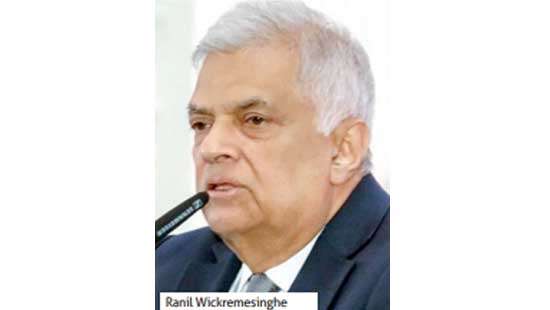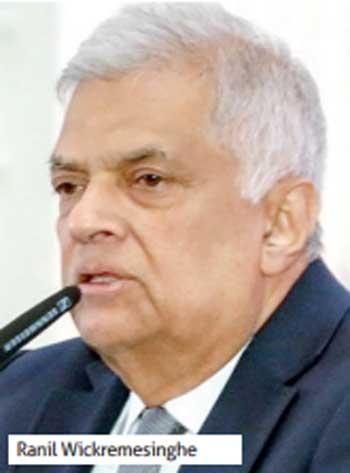Reply To:
Name - Reply Comment

 Prez says hoping to arrive at comprehensive debt restructuring agreement with creditors by the time first review under EFF takes place in six months
Prez says hoping to arrive at comprehensive debt restructuring agreement with creditors by the time first review under EFF takes place in six months
Sri Lanka expects to conclude the discussions with its creditors-both official and private-and reach a debt relief deal by the first review of the International Monetary Fund (IMF) programme that received Executive Board approval early last week.
“We hope to conclude the discussions and arrive at a comprehensive restructuring agreement with the creditors by the time the first review under the EFF in six months takes place,” President Ranil Wickremesinghe told a discussion organised by the professional body of the country’s chartered accountants, CA Sri Lanka yesterday.
The discussion themed ‘Economic Dialogue-IMF and Beyond’ was the first public discussion President Wickremesinghe took part in after the approval of Sri Lanka’s IMF programme.
Sri Lanka has already held two meetings with its official creditors, which include China, India and Parsi Club nations including Japan, and their financing assurances helped the country to unlock the US$ 3 billion IMF bailout package.
The country yesterday initiated discussions with its commercial creditors and investors with Central Bank Governor Dr.Nandalal Weerasinghe and the Treasury Secretary Mahinda Siriwardana outlining the key objectives of the IMF programme and the next steps towards creditor engagement via a virtual presentation.
As at end of 2022, Sri Lanka had US$ 41.4 billion foreign debt, which fell under international law and US$ 42.1 billion of domestic debt, which fell under local law.
Following fiscal adjustments and debt treatment, Sri Lanka is expected to reduce public debt below 95 percent of GDP by 2032.
Sri Lanka’s debt-to-GDP ratio is projected to have reached 128 percent of GDP in 2022, due to exchange rate depreciation, the fiscal deficit, and negative real GDP growth.
Meanwhile, President Wickremesinghe said his target is not merely to stabilise the country’s economy, but to ensure its growth. Sri Lanka’s economy contracted 7.8 percent in 2022, and is expected to contract by about 3 percent this year. A positive growth is expected only in 2024.
“What we are seeking is to stabilise the economy by 2026; to come back virtually to the same ratios we had in 2019.
At the same time, in the next two years, we will be laying ground work for a highly competitive social market economy,” he said.
He noted that trade liberalisation, rationalisation of the remaining para tariffs and bilateral free trade pacts and entering into regional trade agreements are high on his government’s agenda to achieve this goal.
He also stressed that growth-enhancing structural reforms and creating an export-oriented economy were the key to achieve economic prosperity for Sri Lanka.“If we don’t do growth enhancing structural reforms, next time it will be a far more violent uprising. We must boldly go ahead with these structural reforms. This is the last chance,” he said.
Sri Lanka has raised tax rates, introduced cost-reflective utility tariffs, rationalised expenditure and is also in the process of restructuring some state-owned enterprises-both profitable and non-profitable ones.
However, some of these measures have been vehemently opposed by trade unions and certain professional groups.
“Sri Lanka is today at the cross roads between seizing the opportunity for growth, to fix our longstanding institutions and structural problems to become a prosperous society or denying our problems, rejecting change and stagnating as a lower middle-income country,” Wickremesinghe said.